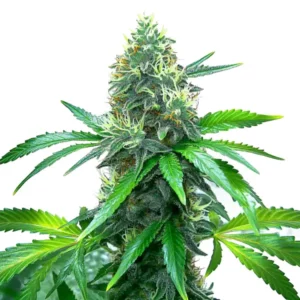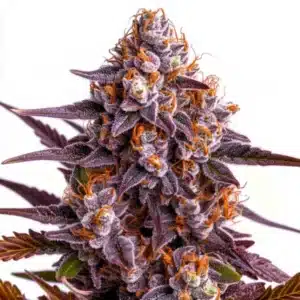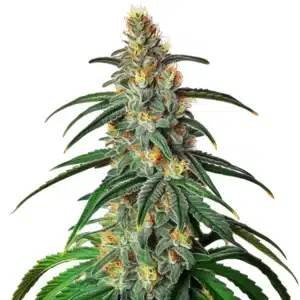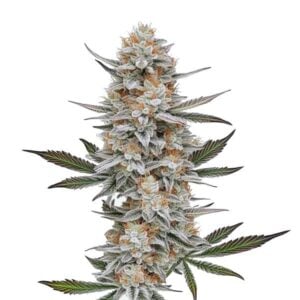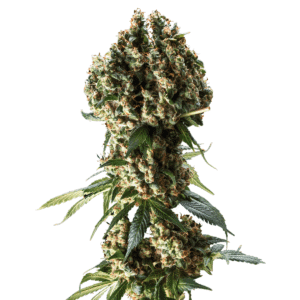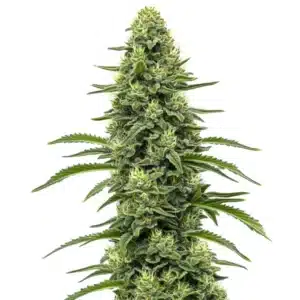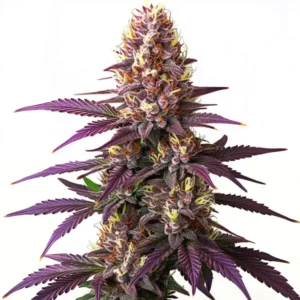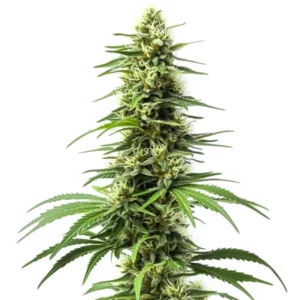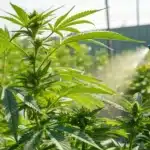
Knowing Weed Smell Scientifically
When you catch a whiff of that distinctive cannabis aroma, you’re experiencing a complex mix of chemical compounds. This fascinating scent comes from a blend of terpenes and other compounds. These molecules are responsible for the unique smells and flavors of different cannabis strains. For those diving into the world of cannabis, understanding weed smell scientifically can enhance your growing or buying experience.
The terpene profile of cannabis smell plays a significant role in defining each strain’s unique fragrance. Terpenes are aromatic oils produced by the cannabis plant. They not only contribute to how cannabis smells but also influence its effects on the body and mind. The scientific analysis of marijuana odor involves breaking down these terpenes and other chemical compounds to understand their impact.
Recommended Strains
OG Kush
|
|
THC | 20% - 24% (Medium) |
|
|
Type | Feminized |
|
|
Yield | Medium |
|
|
Phenotype | 55% Indica / 45% Sativa |
Super Lemon Haze
|
|
THC | 19% (Medium) |
|
|
Type | Feminized |
|
|
Yield | High |
|
|
Phenotype | 20% Indica / 80% Sativa |
Each cannabis strain has a distinct scent, much like a fingerprint. This is where the biochemical basis of marijuana fragrance comes into play. Understanding skunky weed scent scientifically can help growers select strains for particular environments or desired effects. It’s a combination of art and science, with a touch of personal preference.
Chemical Compounds in Cannabis Aroma
The aroma of cannabis is primarily shaped by terpenes. These are volatile compounds that evaporate quickly and are easily detected by our noses. Among the hundreds of terpenes found in cannabis, some of the most common include myrcene, limonene, and pinene. Each of these contributes to the overall fragrance and has distinct characteristics.
Myrcene, for example, often gives cannabis a musky, earthy smell. It’s commonly found in strains like OG Kush. Limonene, on the other hand, provides a citrusy scent and is prevalent in strains such as Super Lemon Haze. Pinene contributes to a pine-like aroma, reminiscent of a walk through the forest.
Besides to terpenes, other chemical compounds in cannabis aroma include flavonoids and esters, which can subtly alter a strain’s scent profile. Flavonoids contribute to the color of the plant and can enhance the overall sensory experience. Esters, on the other hand, can add fruity or floral notes to the cannabis fragrance, further contributing to the complexity of its aroma.
Understanding weed smell scientifically involves recognizing how these chemical compounds interact to create a specific scent profile. By studying the chemical compounds in cannabis aroma, researchers and growers can better predict and manipulate the outcomes of cross-breeding projects. This knowledge empowers growers to develop strains with targeted aromatic characteristics, enhancing both the consumer experience and the marketability of their products.
Scientific Analysis of Marijuana Odor
Analyzing the smell of cannabis scientifically involves using instruments like gas chromatographs. These tools separate and identify the different terpenes and cannabinoids present in the plant. This scientific analysis of marijuana odor helps breeders and growers understand the potential effects and characteristics of their plants.
For growers, knowing the terpene profile of cannabis smell aids in selecting strains that will thrive in their specific growing conditions. For instance, a strain with a high level of limonene might be more resistant to pests due to its citrus aroma. Growers can use this data to make informed decisions about which strains to cultivate.
Beyond cultivation, the scientific analysis of marijuana odor has applications in quality control and product consistency. By analyzing the terpene profile, producers can ensure that their products meet the expected standards for aroma and potency. This is particularly important in regulated markets where consistency and predictability are critical for consumer satisfaction.
Furthermore, understanding weed smell scientifically through odor analysis can aid in the development of new products, such as aromatherapy oils or cannabis-infused edibles. By identifying the specific terpenes responsible for certain effects, manufacturers can formulate products that cater to specific consumer needs, enhancing the overall cannabis experience.
Promos & Deals
Terpene Profile of Cannabis Smell
Each cannabis strain has a unique combination of terpenes that define its smell. For example, the strain Blue Dream from Blimburn Seeds is known for its sweet berry aroma, thanks to its specific terpene profile. This makes it a popular choice for those who appreciate a fruity fragrance.
Another example is the strain Granddaddy Purple, which boasts a grape-like aroma. This is due to its high levels of the terpene myrcene, along with other complementary compounds. By understanding the terpene profile of cannabis smell, you can better predict how a strain will smell and taste.
The terpene profile of cannabis smell is not only about aroma but also about the potential therapeutic effects. Different terpenes can influence the overall experience by interacting with cannabinoids, contributing to the entourage effect. This interaction can enhance or modify the effects of THC and CBD, making the understanding of the terpene profile crucial for both recreational and medicinal users.
Understanding weed smell scientifically by analyzing the terpene profile can also assist in the branding and marketing of cannabis products. By highlighting the unique scents and potential benefits of a strain, producers can differentiate their products in a crowded marketplace. This strategic use of information can attract consumers seeking specific aromatic and therapeutic qualities in their cannabis products.
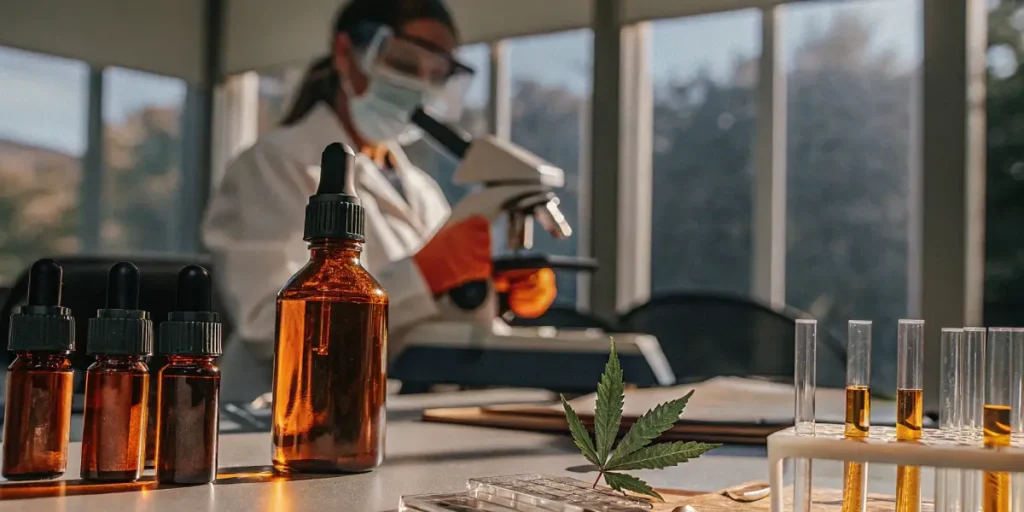
Biochemical Basis of Marijuana Fragrance
The biochemical basis of marijuana fragrance is rooted in the plant’s evolutionary history. Terpenes originally evolved to protect the plant from herbivores and attract pollinators. Today, these same compounds are key to the plant’s aroma and therapeutic effects.
For growers and breeders, manipulating the terpene profile allows for the creation of new, unique strains. By crossbreeding different strains, it’s possible to develop cannabis with desired aromatic properties. This scientific approach to cultivation is both an art and a science.
Knowing the biochemical basis of marijuana fragrance can also provide insights into the plant’s adaptability and resilience. Different terpenes may offer varying levels of protection against environmental stressors, such as pests or diseases. By identifying and enhancing these protective qualities, growers can develop hardier strains that thrive in diverse conditions.
Moreover, the biochemical pathways involved in terpene production are a subject of ongoing research. By delving into these processes, scientists aim to uncover new methods for enhancing terpene expression, leading to more potent and aromatic strains. This scientific endeavor not only enriches our knowing of cannabis but also opens up new possibilities for the industry as a whole.
Understanding Skunky Weed Scent Scientifically
Many people associate cannabis with a skunky smell. This is largely due to the presence of certain terpenes like myrcene and caryophyllene. These compounds give some strains their signature skunky aroma, which can be quite potent.
For those growing cannabis, understanding skunky weed scent scientifically can be crucial for odor management. By selecting strains with different terpene profiles, growers can control the intensity of the smell in their gardens. This is particularly important in areas where cannabis odor might be an issue.
The skunky weed scent not only defines the aromatic profile of certain strains but also influences consumer preferences. Some cannabis enthusiasts seek out strains with a skunky aroma for its perceived intensity and richness. Understanding weed smell scientifically, particularly the skunky scent, can help producers cater to these niche markets, offering products that stand out due to their pungent fragrance.
Additionally, the skunky aroma is often associated with high potency, making it a desirable trait for those seeking a powerful experience. By understanding skunky weed scent scientifically, growers can emphasize these characteristics in their marketing strategies, appealing to consumers looking for robust, full-bodied cannabis experiences.
Practical Applications for Growers
Managing the smell of cannabis can be a critical issue for growers. Using carbon filters and proper ventilation can help control strong odors. Additionally, selecting strains with a less pungent terpene profile can make a significant difference.
Growers may also consider timing their harvests to when the terpene levels are at their peak. This ensures that the cannabis retains its desired aroma and potency. By understanding weed smell scientifically, growers can optimize their cultivation practices for the best results.
Practical applications for growers extend beyond odor management to include maximizing yield and quality. By understanding the terpene profile of cannabis smell, growers can implement cultivation techniques that enhance terpene production, resulting in more aromatic and potent flowers. This knowledge can be leveraged to improve the overall quality of the harvest, leading to higher consumer satisfaction and better market performance.
Furthermore, understanding weed smell scientifically can guide growers in selecting companion plants or implementing pest management strategies that complement or enhance the desired aroma. This holistic approach to cultivation not only improves the sensory qualities of the cannabis but also supports sustainable and eco-friendly growing practices.
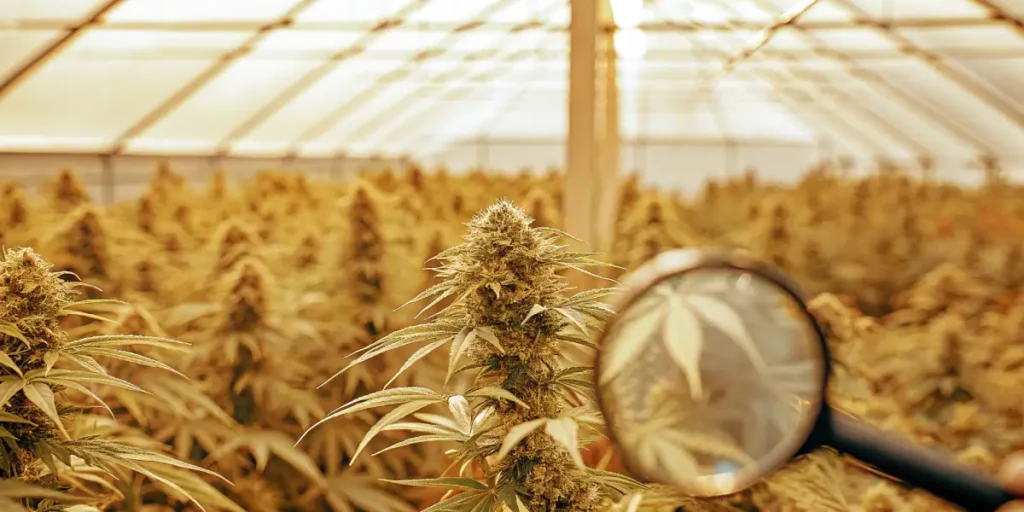
Frequently Asked Questions
What are terpenes and why do they matter?
Terpenes are aromatic compounds found in many plants, including cannabis. They contribute to the plant’s unique smell and taste. In cannabis, terpenes interact with cannabinoids like THC and CBD to create the plant’s overall effects. This is known as the entourage effect.
Knowing the terpene profile of cannabis smell can enhance your experience by allowing you to choose strains that align with your preferences. Whether you’re seeking relaxation or energy, terpenes play a crucial role in the effects you feel.
Terpenes also play a significant role in the medicinal applications of cannabis. Different terpenes are believed to have diverse therapeutic properties, such as anti-inflammatory or anxiolytic effects. By understanding weed smell scientifically, particularly the role of terpenes, patients and healthcare providers can make informed decisions about which strains might best support specific health needs.
Moreover, terpenes contribute to the overall enjoyment and richness of the cannabis experience. For many consumers, the scent and flavor of cannabis are just as important as its effects. By understanding the importance of terpenes, enthusiasts can deepen their appreciation of cannabis and explore a wider range of aromatic possibilities.
How can I identify different cannabis scents?
Identifying cannabis scents involves paying attention to the nuances of the aroma. Common scents include earthy, fruity, citrusy, and skunky. Each of these is associated with different terpenes present in the plant.
To develop your scent identification skills, try smelling a variety of strains and note their distinct characteristics. Over time, you’ll become more adept at recognizing the terpenes that contribute to each strain’s unique fragrance.
Developing the ability to identify cannabis scents can enhance your overall cannabis experience by allowing you to select strains that suit your personal preferences. Whether you’re drawn to the sweet, berry-like aroma of a strain like Blue Dream or the earthy notes of OG Kush, understanding the scent profile can guide your choices and enrich your consumption experience.
Additionally, understanding weed smell scientifically can also aid in identifying potential discrepancies in product quality. If a strain’s aroma doesn’t match its description, it may indicate issues with cultivation, curing, or storage. By honing your scent identification skills, you can become a more discerning consumer and advocate for higher standards within the cannabis industry.
Why does my cannabis plant smell different from the dried product?
A living cannabis plant often has a different aroma compared to the dried and cured product. This change occurs because some terpenes evaporate or transform during the drying and curing process.
Proper curing is essential to preserve the desired aroma and potency of the cannabis. It’s during this time that the terpenes stabilize, resulting in the final scent and flavor profile of the product.
The transformation of the cannabis aroma during drying and curing is a crucial aspect of post-harvest processing. By understanding the changes that occur, growers can optimize their curing techniques to enhance the final product’s aromatic and therapeutic qualities. This is a vital step in ensuring that the intended terpene profile is preserved, offering consumers the best possible experience.
Furthermore, the difference in aroma between fresh and dried cannabis highlights the importance of timing in the harvest process. Harvesting at the right moment, when terpene levels are optimal, can make a significant difference in the final product’s aroma and potency. Understanding weed smell scientifically can guide growers in making these timing decisions, ultimately impacting the quality and appeal of their cannabis.
How does growing environment affect cannabis aroma?
The growing environment significantly affects the terpene profile of cannabis smell. Factors such as light, temperature, and humidity can influence terpene production. Optimizing these conditions can enhance the plant’s natural aroma.
For instance, higher temperatures may lead to increased evaporation of terpenes, affecting the overall scent. Growers can experiment with different environmental conditions to achieve their desired aromatic outcomes.
Knowing the relationship between the growing environment and cannabis aroma allows growers to fine-tune their cultivation practices for optimal results. Factors such as soil quality, water availability, and nutrient balance can also play significant roles in terpene production, influencing the overall fragrance and quality of the cannabis.
By understanding weed smell scientifically, growers can create customized growing conditions that enhance the desired aromatic profile of their plants. This tailored approach not only improves the sensory qualities of the cannabis but also supports the development of specialized strains that cater to specific consumer preferences and market demands.
Can I enhance the smell of my cannabis plants?
Yes, enhancing the smell of cannabis plants is possible through several techniques. Ensuring your plants receive the right nutrients and environmental conditions can boost terpene production.
Additionally, some growers use techniques like super cropping or topping to increase terpene levels. These methods stress the plant in a controlled way, encouraging it to produce more aromatic compounds.
Other methods for enhancing the smell of cannabis plants include the use of organic nutrients and supplements designed to boost terpene production. These products can enrich the soil or hydroponic solution, providing the plant with the essential elements needed to produce a robust terpene profile.
Moreover, understanding weed smell scientifically can guide growers in experimenting with different cultivation techniques to discover what works best for their specific strains and growing conditions. This scientific approach to enhancing aroma not only improves the quality of the final product but also contributes to a deeper knowing of the plant’s complex biochemistry.


